1. Cowboys Wore Stetsons Everywhere
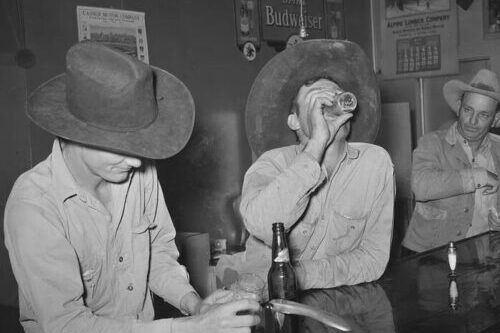
When most people picture cowboys, that wide-brimmed Stetson hat immediately comes to mind. The truth is, Stetsons were expensive and often saved for special occasions rather than worn daily on the trail. Many cowboys actually wore cheaper, practical hats that offered sun protection but wouldn’t bankrupt them. Hollywood just made the Stetson iconic, and that image stuck.
The myth persists because movies and Westerns needed a visual shorthand for “cowboy.” That tall hat silhouette against a desert sunset is unforgettable. Even rodeo costumes today lean on the Stetson stereotype. It’s a classic example of style over reality shaping history in the popular imagination.
2. Gunfights Happened on Main Street
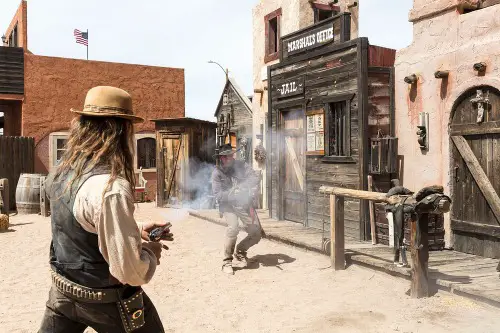
We love the idea of a dusty, dramatic showdown in the middle of town at high noon. In reality, these dramatic standoffs were extremely rare. Most conflicts were settled quietly, through words or minor scuffles. The idea of everyone carrying guns and drawing them theatrically is more cinematic than historical.
Movies turned the “gunfighter duel” into a central motif, so it became the image people remember. True gunfights were usually brief, chaotic, and messy, not clean showdowns with perfect timing. Towns often had ordinances against public shootings, and sheriffs worked hard to enforce them. The myth endures because a slow-motion duel just makes for better storytelling.
3. Outlaws Rode into Town Shooting Up Everything
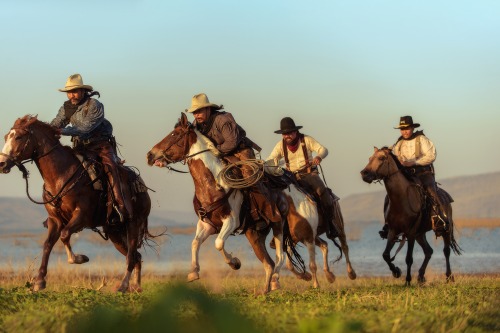
Thanks to films, outlaws are often pictured as chaotic, armed robbers who terrorized towns nonstop. In reality, most criminals were strategic, avoiding unnecessary attention. Banks and trains were targeted, but townspeople were usually left alone unless someone tried to stop them. Outlaws relied on stealth and speed, not theatrics.
The myth sticks because larger-than-life figures like Jesse James and Billy the Kid have been romanticized endlessly. Stories of mayhem make great headlines, both then and now. It’s easier to imagine a whole town running scared than a careful, calculated robbery. This exaggeration made the Wild West seem wilder than it actually was.
4. The West Was a Lawless Wasteland

Hollywood loves painting the frontier as completely lawless, with chaos at every turn. The reality was that towns often had established law enforcement, judges, and community rules. Vigilante justice did occur, but it wasn’t the norm for every town. Many settlers valued order and worked hard to maintain it.
The myth thrives because stories of shootouts and stagecoach robberies are way more exciting than tales of legal paperwork. Movies and books emphasize the “dangerous frontier” to create drama. People still picture the West as anarchic because it makes history feel thrilling. In truth, law and order existed alongside the occasional rebellion.
5. Everyone Rode Horses All the Time
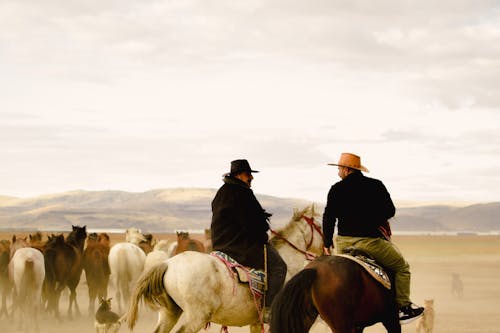
When we think of the West, we imagine endless horseback riding across deserts and plains. While horses were essential for work and travel, not everyone owned one, and many people walked or used wagons. Horses were expensive to maintain, so only ranchers and wealthier individuals relied on them daily.
The myth endures because horses make for a visually striking story element. Westerns and postcards reinforced the idea of a horse-dominated landscape. Modern audiences love the romance of galloping across open plains. In reality, life was more practical and less cinematic.
6. Saloon Girls Were All Ladies of the Night
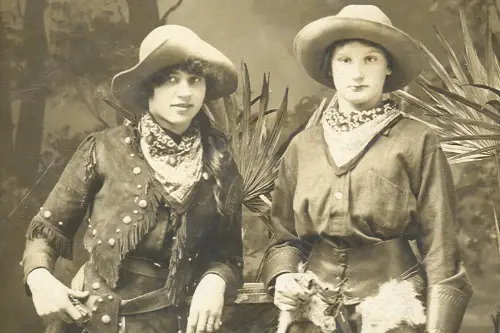
Old Western movies love a saloon with a smoky bar and glamorous “saloon girls.” In reality, many women worked as hostesses, entertainers, or servers. Some did offer intimate services, but that wasn’t a universal rule. The stereotype simplifies a more complex social reality.
The image persists because Hollywood leaned into the titillating and dramatic. A saloon girl singing on stage is a more exciting visual than a bartender quietly pouring drinks. It also served to exaggerate the supposed “wildness” of frontier towns. History was much more varied than these caricatures suggest.
7. Gold Rushes Made Everyone Rich
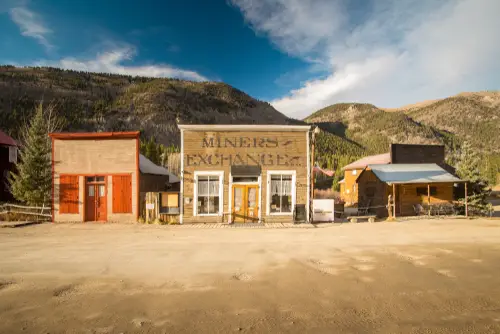
We love imagining people striking it rich overnight with a gold pan in a river. The truth is most miners barely made enough to survive, and many left empty-handed. Mining was physically grueling and expensive, and only a few got wealthy. Most prospectors faced harsh conditions and constant uncertainty.
The myth persists because success stories like those of Sutter’s Mill are legendary. Movies focus on the lucky few who hit gold. It’s more inspiring to imagine instant wealth than daily slogging through mud. In reality, the Gold Rush was about struggle as much as opportunity.
8. Native Americans Were Constantly at War With Settlers

Western narratives often depict Native Americans as perpetual antagonists to settlers. While conflicts did happen, many Native communities coexisted with settlers peacefully. Trade, negotiation, and alliances were common, though violence did occur due to encroachment and broken treaties. The constant-war image oversimplifies a complicated history.
The myth persists because it creates a clear “good vs. bad” storyline for stories. Movies favored dramatic confrontations over nuanced interactions. People remember battles but forget diplomacy and daily life. This skewed perception shapes modern myths of the frontier.
9. Everyone Spoke With a Texan Drawl
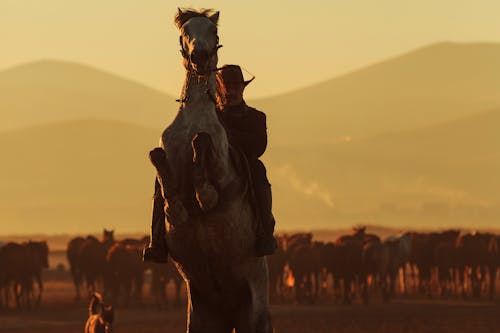
Western films are famous for their slow, drawling accents. In reality, the frontier was filled with a mix of regional accents, immigrants, and languages. People from the East, Europe, and Latin America all contributed to the linguistic landscape. The “Texan cowboy” accent is mostly cinematic shorthand.
The myth sticks because a distinct accent helps audiences identify characters instantly. Dialogue needed to be punchy, so filmmakers exaggerated speech patterns. Modern pop culture still leans on that Southern or Western twang for flavor. It’s memorable, but historically inaccurate.
10. The West Was Full of White Settlers

Many movies focus on white cowboys, outlaws, and pioneers. The reality is that African Americans, Chinese immigrants, Mexicans, and Native Americans played major roles in shaping the West. Buffalo soldiers, Chinese railroad workers, and Mexican vaqueros were integral to its development. The white-centric myth erases this rich diversity.
Hollywood helped cement this skewed picture for storytelling simplicity. Focusing on white characters made plots easier to follow for early audiences. Modern media is slowly correcting this, but the stereotype lingers. Reality was far more multicultural than popular myths suggest.
11. Stagecoaches Were Always Robbed
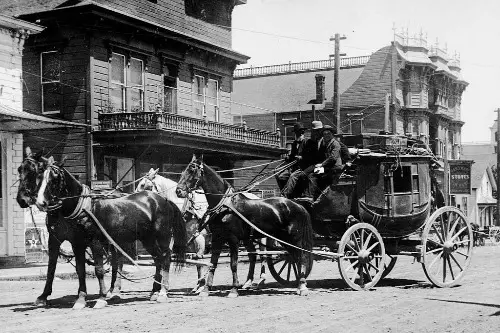
We think of stagecoaches as prime robbery targets, with outlaws holding everyone at gunpoint. In truth, most stagecoach trips were uneventful. Robberies were infrequent and dangerous, often avoided by criminals who didn’t want to risk capture. Stagecoaches were more about reliable transportation than dramatic heists.
The myth persists because movies and dime novels loved action-packed storytelling. The drama of a holdup sells papers and tickets. People remember the robberies more than the mundane, safe journeys. Hollywood prioritized suspense over accuracy, cementing this image.
12. Cowboys Lived Solo on the Open Range
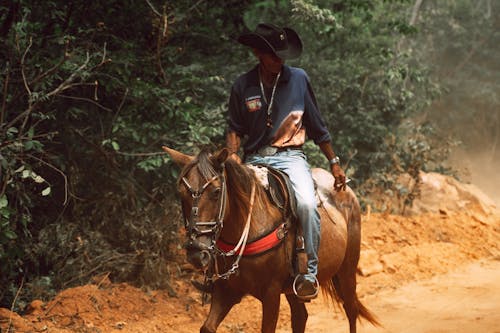
The image of a lone cowboy riding across endless plains is iconic. In reality, most cowboys worked in teams on ranches and had close-knit communities. Life on the range involved long hours of collaboration, not solitary heroics. The solitary cowboy makes for a better movie hero than a team of laborers.
The myth persists because it taps into the American love of rugged individualism. Stories of lone heroes riding into the sunset resonate deeply. Films and literature emphasized independence over daily routines. In truth, cowboys were much more social and cooperative than their cinematic counterparts.
13. Everyone Carried a Revolver
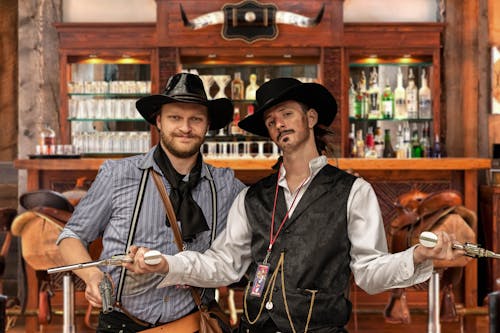
Popular culture loves to show every man, woman, and child walking around strapped with a six-shooter. The reality is that guns were expensive, heavy, and not always necessary for daily life. Farmers and townsfolk often relied on tools, knives, or rifles more suited to hunting than dueling. Carrying a revolver was more of a luxury or necessity for specific jobs than a universal standard.
The myth has stuck because the revolver became a powerful symbol of the West. Hollywood turned the six-shooter into a defining prop for heroes and villains alike. A cowboy without a gun just doesn’t look “authentic” on screen. The practicality of weapon ownership was lost in the romanticized imagery of constant readiness for battle.
14. The Frontier Was All Desert and Dust
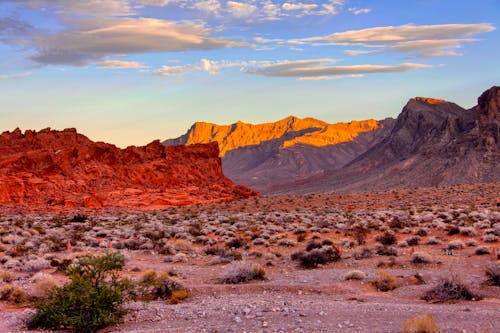
When people imagine the Wild West, they often picture endless barren deserts and tumbleweeds rolling by. In truth, the American frontier covered a wide range of landscapes, from forests and grasslands to mountain ranges and fertile valleys. Settlers lived in places with rivers, farmland, and even bustling towns with gardens. The “endless desert” image is mostly a cinematic shorthand for ruggedness.
The myth stuck because filmmakers wanted visually striking, harsh backdrops that emphasized isolation. The desert made for dramatic scenery, even if it didn’t represent the majority of settlements. Westerns simplified geography for effect, reinforcing the dust-and-tumbleweed stereotype. The reality was a far more diverse and varied environment.
15. Sheriffs Ruled Towns With an Iron Fist
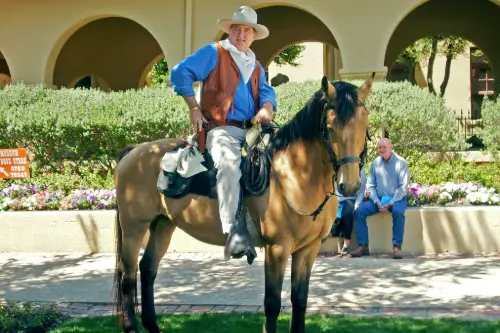
Many people imagine the local sheriff as a feared figure who controlled every aspect of frontier life. In truth, most sheriffs were ordinary men elected by townsfolk and limited by community oversight. Their authority was often weak compared to town councils, judges, or even influential businessmen. They were more peacekeepers than dictators.
The myth comes from the need to tell stories with clear authority figures. A lone sheriff facing down bandits creates a strong narrative arc. In reality, law enforcement was collaborative and often underfunded. Hollywood’s “iron-fist sheriff” simply made better drama.
16. The Pony Express Was a Major Mail Service
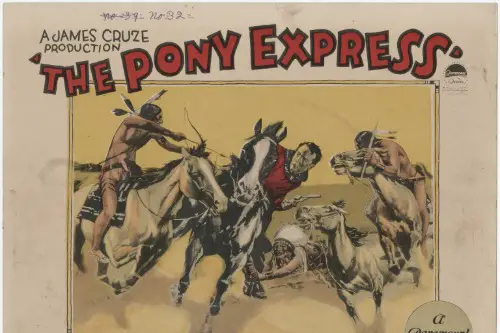
The Pony Express is remembered as the backbone of frontier communication. In reality, it only operated for about 18 months before being replaced by the telegraph. Riders were brave and fast, but the system was costly and inefficient. Despite its short lifespan, it looms large in Western folklore.
The myth persists because the Pony Express embodied speed, bravery, and adventure. Stories of young riders racing across dangerous terrain captured the public imagination. Though historically minor, it became a symbol of determination and progress. Its legend far outgrew its practical importance.
17. Cowboys Were Always White Men
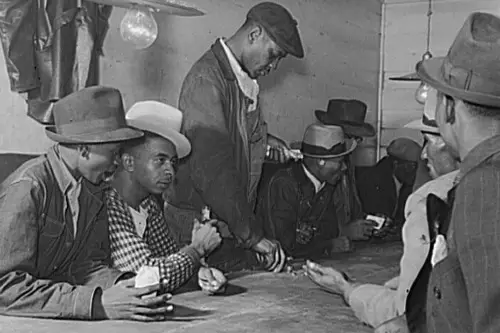
The cowboy image in film is nearly always a rugged white ranch hand. Historically, a large portion of cowboys were African American, Mexican, or Native American. Many traditions we associate with cowboys, like roping and riding techniques, came directly from Mexican vaqueros. The reality was diverse, but that diversity was often erased from popular memory.
The myth endures because early Western films catered to white audiences and streamlined representation. A multicultural West was simplified into a white-dominated narrative for easier marketing. Only recently have historians and filmmakers begun restoring this truth. The cowboy’s multicultural roots are a vital part of American history.
18. Gambling Dominated Every Saloon
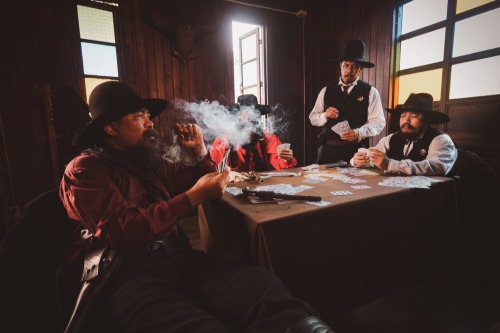
Saloons in movies are always shown with poker games, roulette wheels, and gamblers crowding the tables. While gambling did occur, it wasn’t the universal centerpiece of every bar. Many saloons focused on food, drink, and socializing rather than high-stakes games. Gambling halls did exist, but they weren’t as common as the myths suggest.
The myth continues because card games create built-in tension and drama for storytelling. A poker table standoff can be just as thrilling as a gunfight. Movies cemented the idea that every saloon had a smoky backroom of gamblers. Reality was more mundane, with most people simply looking for a meal or a drink.
19. Settlers Constantly Battled the Wilderness Alone
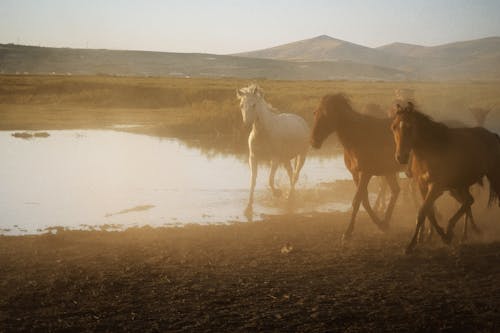
Stories often portray settlers as lone families fighting off wolves, bandits, and starvation in total isolation. In truth, most pioneers joined wagon trains, settled in communities, and relied on cooperation to survive. Neighbors shared resources, built barns together, and created support networks. Survival was a group effort, not just individual grit.
The myth thrives because rugged individualism is a central American ideal. Tales of lone settlers overcoming all odds resonate more than stories of teamwork. Hollywood leaned into the “against all odds” narrative for dramatic effect. In reality, frontier life was sustained by collaboration.
20. The Wild West Ended Overnight
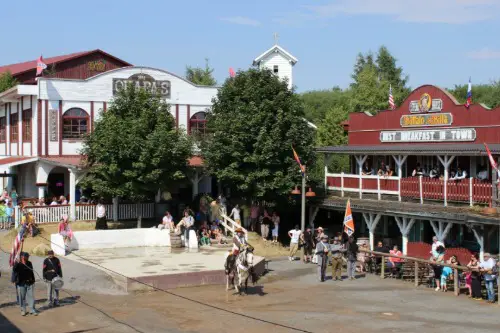
Many people think the West ended suddenly with a symbolic event like the last land rush or the completion of the railroads. The truth is the “closing of the frontier” was a gradual, decades-long process. Settlements expanded, laws became stricter, and industrialization slowly replaced the frontier lifestyle. There wasn’t a single day when the Wild West ceased to exist.
The myth persists because people love tidy endings to complex eras. Declaring the frontier “closed” makes history easier to package. Films and books cemented this idea by giving the West a dramatic conclusion. In reality, cultural and social shifts happened over many years.
This post 20 Wild West Myths That Modern Americans Still Believe was first published on American Charm.


